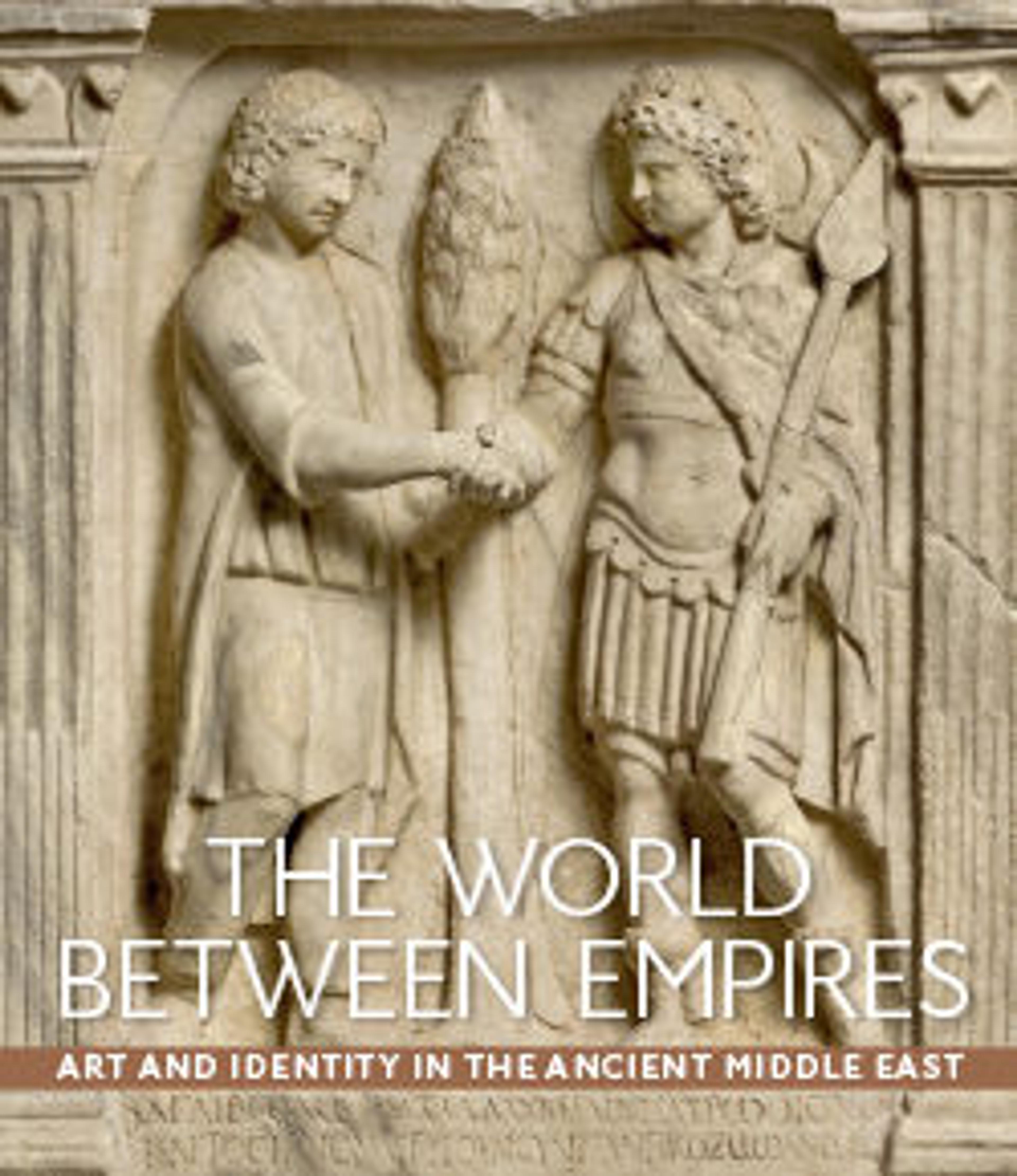Door lintel with lion-griffins and vase with lotus leaf
The border between the western empire of Rome and the Parthian lands in the east ran between the central and northern Euphrates and Tigris rivers. Hatra in northern Iraq, southwest of modern Mosul, was a major trading city heavily fortified against Roman attack.
Once part of a decorated doorway in the Great Iwans, the main temple building at the heart of the Great Temple enclosure at Hatra, this lintel stone was originally positioned so that the carved surface faced the floor. The two fantastic creatures have feline bodies, long ears, wings, and crest feathers—a combination of animal and bird elements typical of Near Eastern lion-griffins. Between the two figures is a vase containing a stylized lotus leaf and two tendrils. The naturalistic modeling of the creatures' bodies and the form of the central vase reflect Roman influence. However, the absolute symmetry of the composition, the pronounced simplification of the plant forms, and the lion-griffin motif are all characteristic of the Near East.
Once part of a decorated doorway in the Great Iwans, the main temple building at the heart of the Great Temple enclosure at Hatra, this lintel stone was originally positioned so that the carved surface faced the floor. The two fantastic creatures have feline bodies, long ears, wings, and crest feathers—a combination of animal and bird elements typical of Near Eastern lion-griffins. Between the two figures is a vase containing a stylized lotus leaf and two tendrils. The naturalistic modeling of the creatures' bodies and the form of the central vase reflect Roman influence. However, the absolute symmetry of the composition, the pronounced simplification of the plant forms, and the lion-griffin motif are all characteristic of the Near East.
Artwork Details
- Title:Door lintel with lion-griffins and vase with lotus leaf
- Period:Parthian
- Date:ca. 2nd–early 3rd century CE
- Geography:From Mesopotamia, Hatra
- Culture:Parthian
- Medium:Limestone
- Dimensions:28 1/8 × 66 1/2 × 4 in. (71.4 × 168.9 cm × 10.2 cm)
- Credit Line:Purchase, Joseph Pulitzer Bequest, 1932
- Object Number:32.145a, b
- Curatorial Department: Ancient West Asian Art
Audio
- Door lintel with lion-griffins and vase with lotus
leaf
0:00
0:00
We're sorry, the transcript for this audio track is not available at this time. Please email info@metmuseum.org to request a transcript for this track.
More Artwork
Research Resources
The Met provides unparalleled resources for research and welcomes an international community of students and scholars. The Met's Open Access API is where creators and researchers can connect to the The Met collection. Open Access data and public domain images are available for unrestricted commercial and noncommercial use without permission or fee.
To request images under copyright and other restrictions, please use this Image Request form.
Feedback
We continue to research and examine historical and cultural context for objects in The Met collection. If you have comments or questions about this object record, please contact us using the form below. The Museum looks forward to receiving your comments.
